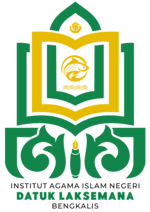Peningkatan Kreativitas Guru Dalam Mengajar Melalui Pelatihan Model Assure Dengan Pendekatan Scientific Pada Mgmp Pendidikan Agama Islam Di Sekolah Menengah Atas Kabupaten Indragiri Hulu Tahun 2017
DOI:
https://doi.org/10.56633/jkp.v14i1.35Abstract
Creativity is a new invention, in order to fix the problems that occur in the world of education, involving changes in technology and science that is developed today to achieve the goals. The purpose of this action research is to know the Improvement of Teachers’ Creativity in Teaching through Assure Model with scientific approach of MGMP PAI at Senior High School Indragiri Hulu Regency 2017. There were four stages in conducting the research. They were (1) planning, (2) Acting, (3) Observing, and (4) Reflection. From the results of actions research can improve the teachers’ creativity in teaching to achieve the ideal standard after giving training assure model by using approach of scientific is increasing, from pre-training and after training by the observer through (cycle 1) 72.59% to 77.04%, and the second cycle also increased to; 83.33% - 77.04% = 6.30%, The average of teachers’ creativity ability in teaching PAI amounted to 44.44% rose to 100%.
References
Dewi Salma Prawiradilaga, Prinsip Desain Pembelajaran, Jakarta: Kencana, 2008.
Daryanto,Belajar dan Mengajar, Bandung: CV. Yrama Widya, 2010.
E.Mulyasa,Menjadi Guru Profesional Menciptakan Pembelajaran Kreatif dan Menyenangkan, Bandung: PT Rosdakarya, 2008.
Istarani & Intan Pulungan, Ensiklopedi Pendidikan, Medan: CV. Iscom Medan, 2015.
Kunandar, Guru Profesional implementasi Kurikulum TingkatSatuan pendidikan (KTSP) dan sukses dalam Sertifikasi Guru, Jakarta: Rajawali Pers, 2009.
Kevin Seifert, Pedoman Pembelajaran & Instruksi Pendidikan, Yogyakarta: IRCiSoD, 2012.
Jalaluddin, Filsafat Ilmu Pengetahuan, Cet 1, Jakarta: PT Raja Grafindo Persada, 2013
Marno & M. Idris, Strategi, Metode, dan Teknik Mengajar:Menciptakan Keterampilan Mengajar yang Efektif & Edukatif, Yogyakarta: Ar-Ruzz Media,2014.
Nana Syaodah Sukmadinata, Landasan Psikologi Proses Pendidikan, Bandung: PT Remaja Rosdakarya, 2005.
Ngainun,Menjadi Guaru Inspiratif, Yogyakarta: Pustaka Belajar, 2009.
Rusman, Model-model pembelajaran-Mengembangkan Profesionalisme Guru, Cetakan keempat, Jakarta: PT.Rajagrafindo Persada, 2011.
Surayin, Kamus Umum Bahasa Indonesia,Cetakan ke 4, Bandung: Yrama Widya, 2007.
Sharon E. Smaldino, Dkk, Instructional Technology & Media For Learning, Jakarta: Kencana, 2011.
.
Smaldino, S.E., & Russel, J.D. Instructional Technology and Media for Learning, Upper Saddle River: Pearson Educatiom, Inc, 2005.
Sunarno, Pembelajaran Metode Eksperimen dan Inkuiri Terbimbing Ditinjau dari Sikap Ilmiah dan Kemampuan dalam Menggunakan Alat Ukur, Tesis, Surakarta: Program Pascasarjana, 2010.
Yatim Riyanto, Paradigma Baru Pembelajaran sebagai Refrensi Bagi Guru/ Pendidik dalam Implementasi Pembelajaran yang Efektif dan Berkualitas, Cetakan ke-2, Jakarta: Kencana, 2010.
Yeni Rachmawati,Strategi Pengembangan Kreativitas pada Anak Usia Taman Kanak- Kanak, Jakarta: Kencana, 2010.
Yossy Suparyo, UU Republik Indonesia No.20 Tahun 2003 tentang Sistem Pendidikan Nasional (Sisdiknas), Yogyakarta: Media Abadi, 2005.
Downloads
Published
Issue
Section
License
Authors who publish with this journal agree to the following terms:
- Authors retain copyright and grant the journal right of first publication with the work simultaneously licensed under a Creative Commons Attribution-ShareAlike 4.0 International License. that allows others to share the work with an acknowledgement of the work's authorship and initial publication in this journal.
- Authors are able to enter into separate, additional contractual arrangements for the non-exclusive distribution of the journal's published version of the work (e.g., post it to an institutional repository or publish it in a book), with an acknowledgement of its initial publication in this journal.
- Authors are permitted and encouraged to post their work online (e.g., in institutional repositories or on their website) prior to and during the submission process, as it can lead to productive exchanges, as well as earlier and greater citation of published work (See The Effect of Open Access).






